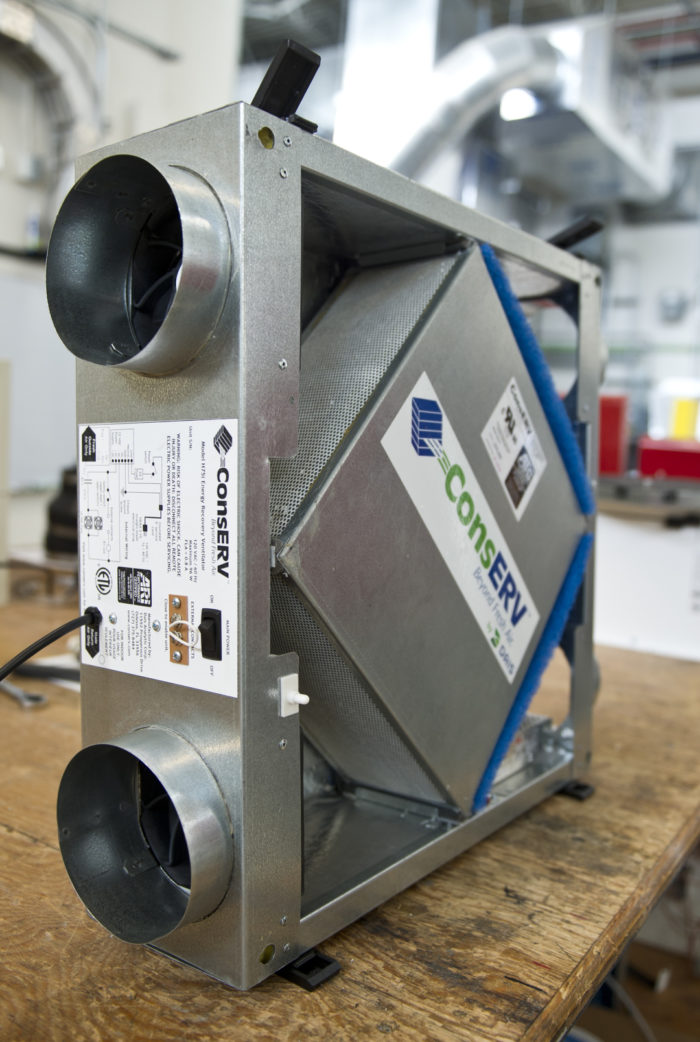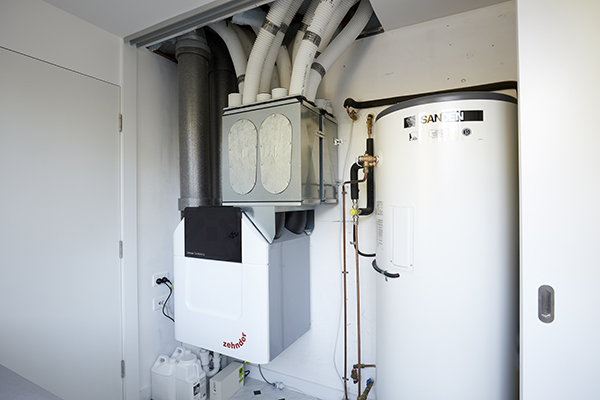How HRV Helps Prevent Mold and Indoor Damage
Exactly How Heat Recovery Ventilation Enhances Indoor Air Top Quality and Reduces Energy Prices
Heat Recovery Ventilation (HRV) systems play a crucial function in improving interior air high quality while simultaneously decreasing energy expenditures. By effectively trading stale interior air with fresh outdoor air, HRVs aid maintain excellent moisture and minimize toxins. Additionally, their capacity to recover warm from outgoing air lessens the strain on heating and cooling down systems. As energy expenses remain to increase, understanding the full possibility of HRV systems becomes significantly essential for homeowners and services alike.
Understanding Heat Recovery Ventilation Equipments

Heat recovery ventilation (HRV) systems play an essential duty in improving interior air top quality, particularly in contemporary, energy-efficient structures. These systems are designed to transfer warmth from the outward bound stale air to the incoming fresh air, therefore minimizing energy loss while preserving excellent temperature levels inside your home. HRVs include a warmth exchanger, followers, and ductwork, helping with the continual blood circulation of air. By removing interior pollutants and presenting fresh air, HRVs aid to stabilize moisture degrees, prevent mold growth, and decrease allergens. The performance of HRV systems depends on their capacity to recoup approximately 80% of the warmth from the worn down air, promoting power conservation while guaranteeing a healthy and balanced indoor environment. Their combination is essential in accomplishing sustainable living techniques.
The Value of Indoor Air High Quality
Indoor air quality (IAQ) is an essential factor influencing the health and wellness and health of occupants in any atmosphere. Poor IAQ can cause numerous wellness issues, consisting of breathing problems, allergic reactions, and exhaustion. In addition, it can aggravate present problems such as asthma. Variables adding to low IAQ include toxins from indoor sources like cleansing representatives, mold and mildew, and inadequate ventilation. Keeping good IAQ is crucial for promoting a secure and comfortable living or functioning area. Effective approaches to enhance IAQ entail routine monitoring of air high quality, correct ventilation systems, and decreasing using hazardous compounds inside your home. By prioritizing IAQ, individuals can assure a much healthier atmosphere that fosters productivity and total top quality of life.
Energy Performance Conveniences of HRV Systems
Lots of property owners and building supervisors are significantly identifying the power efficiency benefits of warm recuperation air flow (HRV) systems. By transferring heat from exhausted indoor air to incoming fresh air, HRV systems markedly decrease the energy needed for heating & cooling. This process lessens dependence on standard cooling and heating systems, leading to lower energy bills. Additionally, HRVs help maintain a balanced indoor climate, preventing excessive heating or cooling down needs. The capacity to recuperate as visit much as 90% of the warm from outbound air likewise supports sustainability efforts by reducing total power intake. Subsequently, HRV systems add not only to cost savings yet additionally to a minimized carbon footprint, lining up with the expanding focus on energy-efficient structure practices.
Installment and Maintenance Considerations
The effective execution of warm recovery air flow (HRV) systems needs careful factor to consider of setup and upkeep aspects to guarantee peak efficiency. Appropriate positioning of the HRV unit is crucial, as it must be websites set up in a place that makes best use of air movement while decreasing sound disturbance. Furthermore, ductwork needs to be properly sized and insulated to stop energy loss. Regular upkeep, including filter replacement and system cleaning, is essential to safeguard ideal performance and indoor air quality. Proprietors must develop a routine maintenance timetable to determine and deal with potential issues before they rise. Collaboration with experienced experts throughout both setup and upkeep stages can enhance the long life and efficiency of HRV systems, inevitably leading to far better indoor settings and decreased power expenses.
Real-World Applications and Success Stories
Exploring real-world applications of warm healing air flow (HRV) systems exposes their significant effect on interior air quality and energy effectiveness across numerous settings. In property structures, home owners have reported improved air top quality, resulting in less allergies and breathing issues. Schools implementing HRV systems have kept in mind improved pupil focus and decreased absence due to Going Here far better air flow. Industrial structures, such as offices and retail areas, have actually experienced reduced energy prices and increased worker performance. As an example, a business workplace in a temperate climate accomplished a 30% decrease in power expenses after setting up an HRV system. These success stories demonstrate that HRV technology not only adds to much healthier atmospheres but also gives substantial monetary benefits, making it a valuable financial investment for different industries.
Frequently Asked Inquiries
Can HRV Equipments Lower Allergens in Indoor Air?
The effectiveness of HRV systems in reducing interior allergens primarily rests on their capacity to filter and exchange air. HRV Heat Recovery Ventilation. By continually replacing stagnant air, these systems can substantially reduce allergen degrees throughout indoor environments

How Does Moisture Affect HRV System Efficiency?
Humidity significantly influences HRV system efficiency; high levels can result in condensation, reducing performance, while reduced humidity might boost air exchange. Balancing humidity is important for excellent procedure and preserving interior air top quality.
Are HRV Systems Noisy Throughout Operation?
HRV systems can create varying sound levels throughout operation, depending on their layout and setup. Some units run quietly, while others might generate recognizable noise, especially at greater air flow settings or when inadequately preserved.
What Is the Average Life Expectancy of an HRV System?

Can HRV Systems Be Used in All Climates?
HRV systems can be used in different climates, however their effectiveness might vary - HRV Heat Recovery Ventilation. In severe temperatures, modifications or supplementary systems could be necessary to assure ideal performance and convenience while keeping interior air top quality